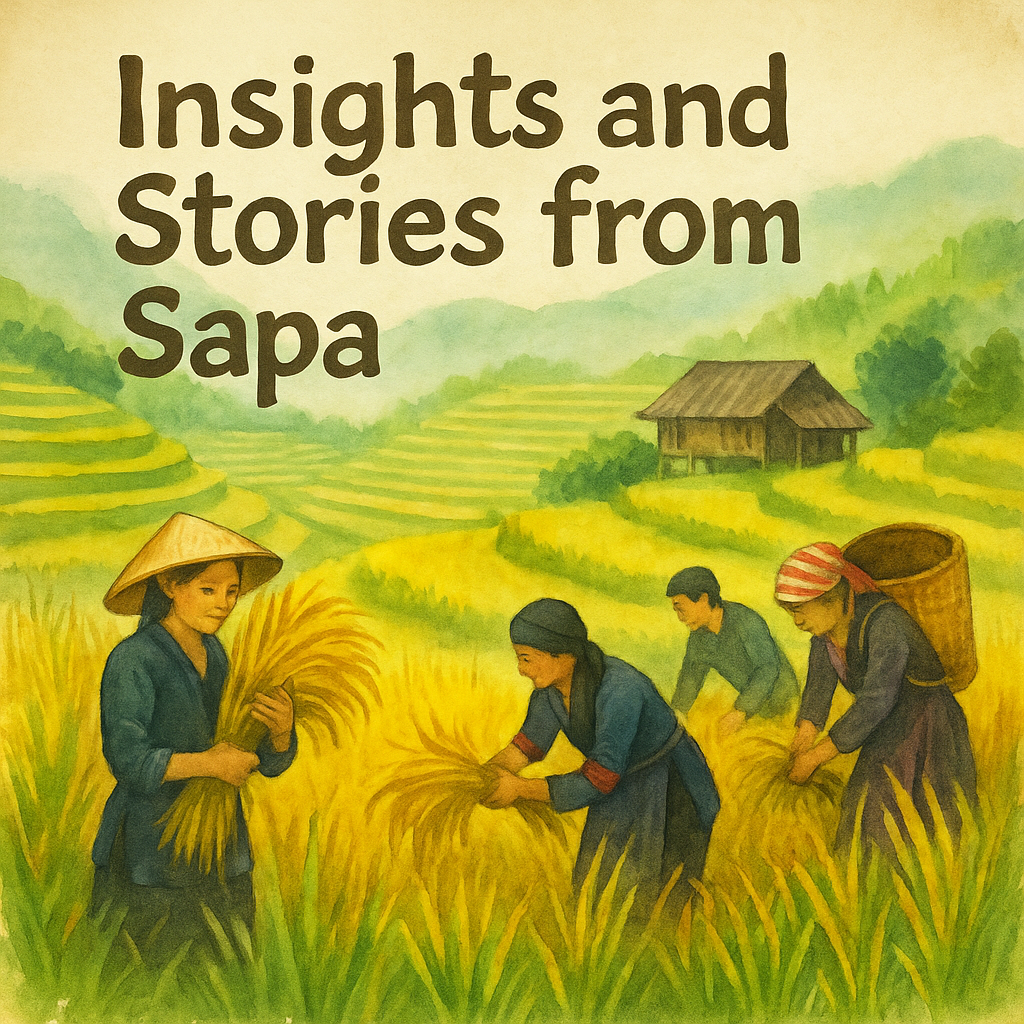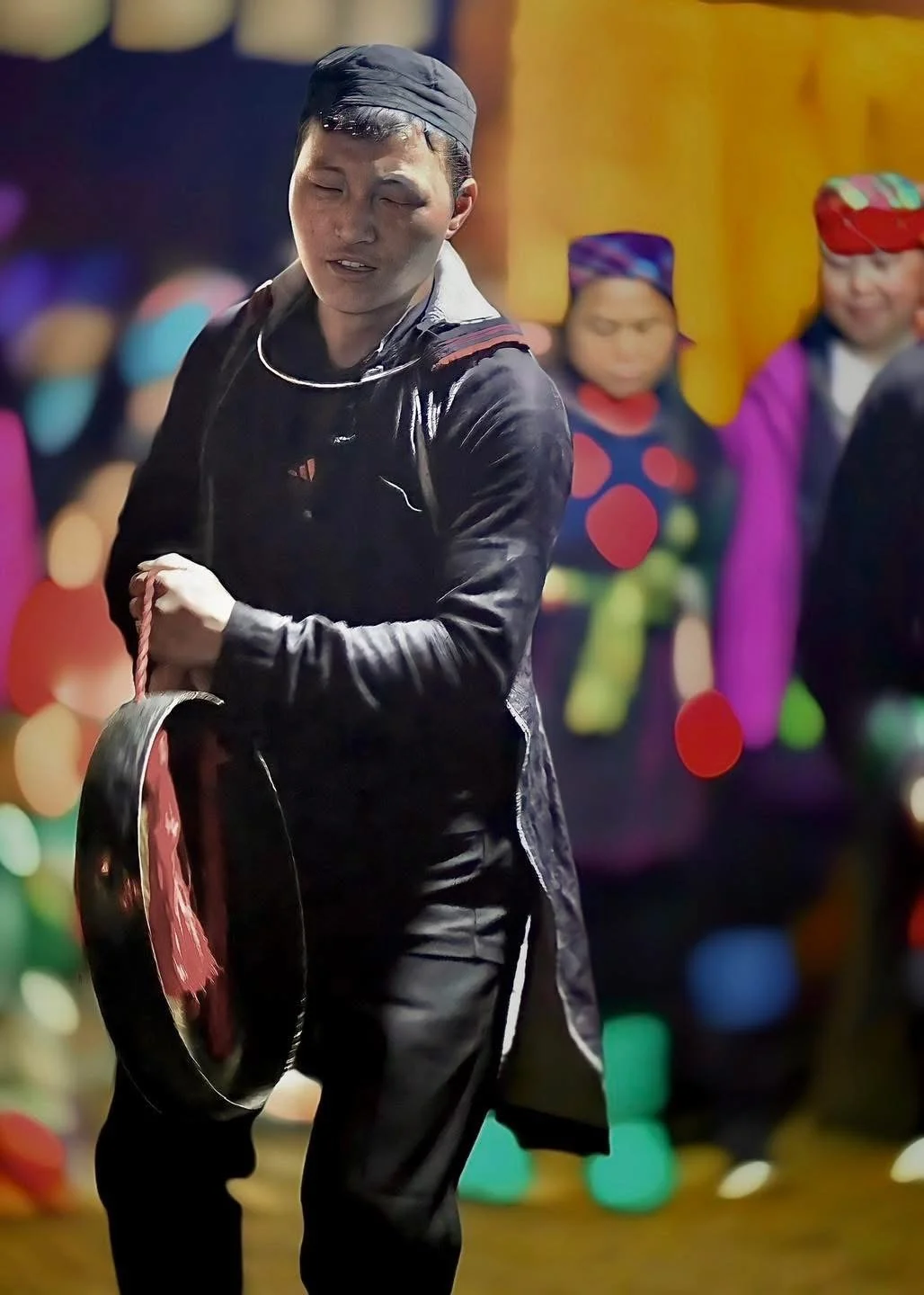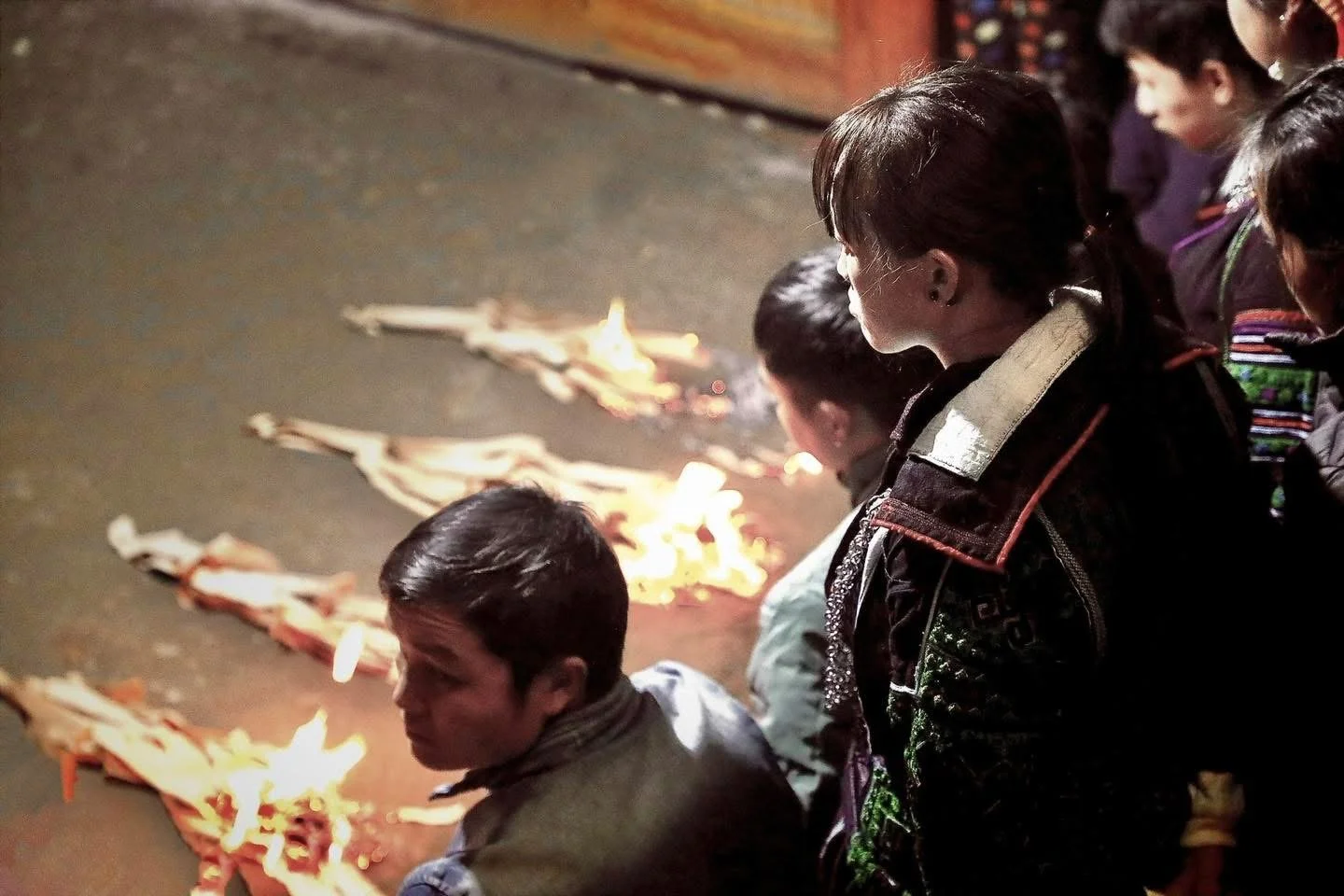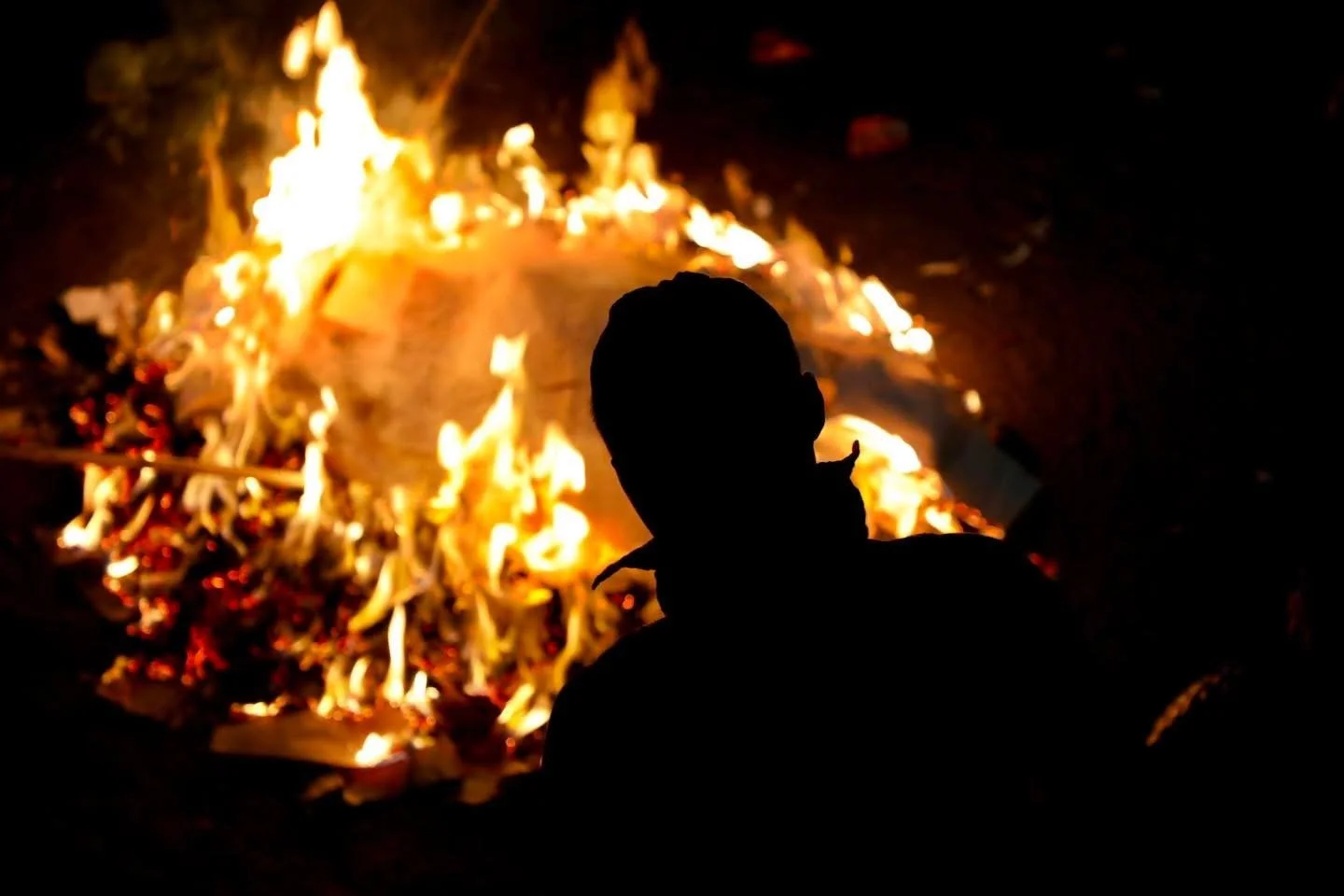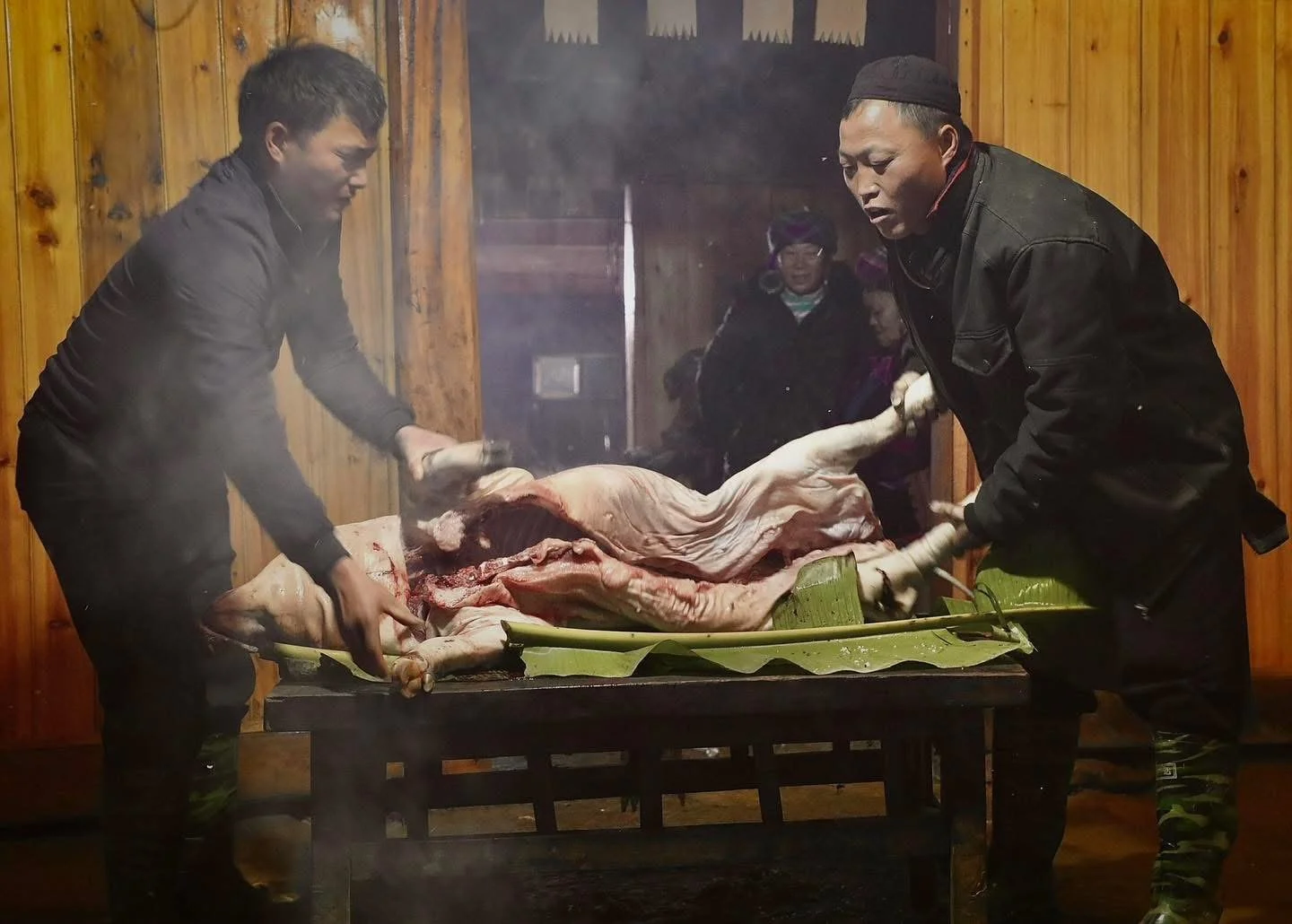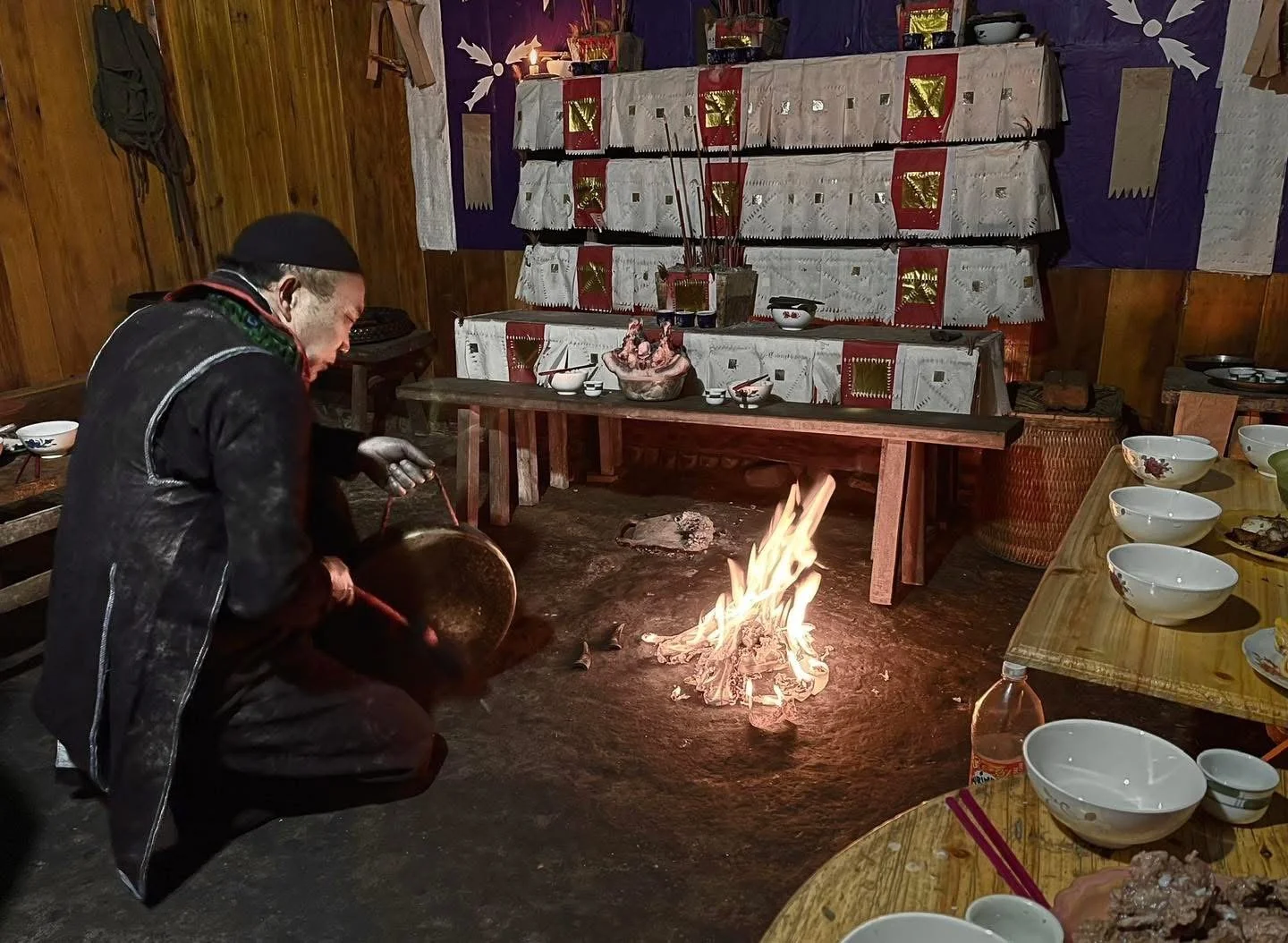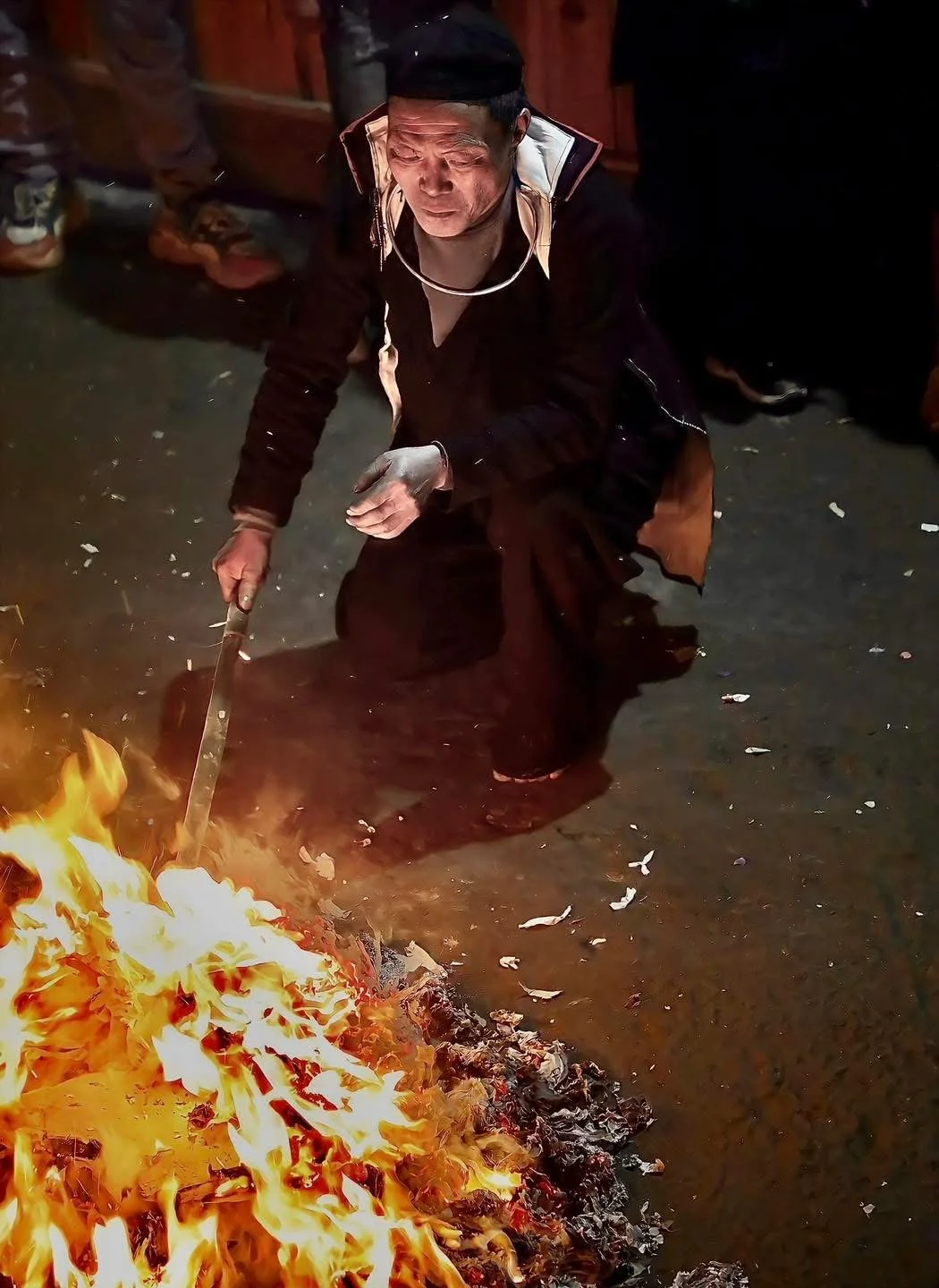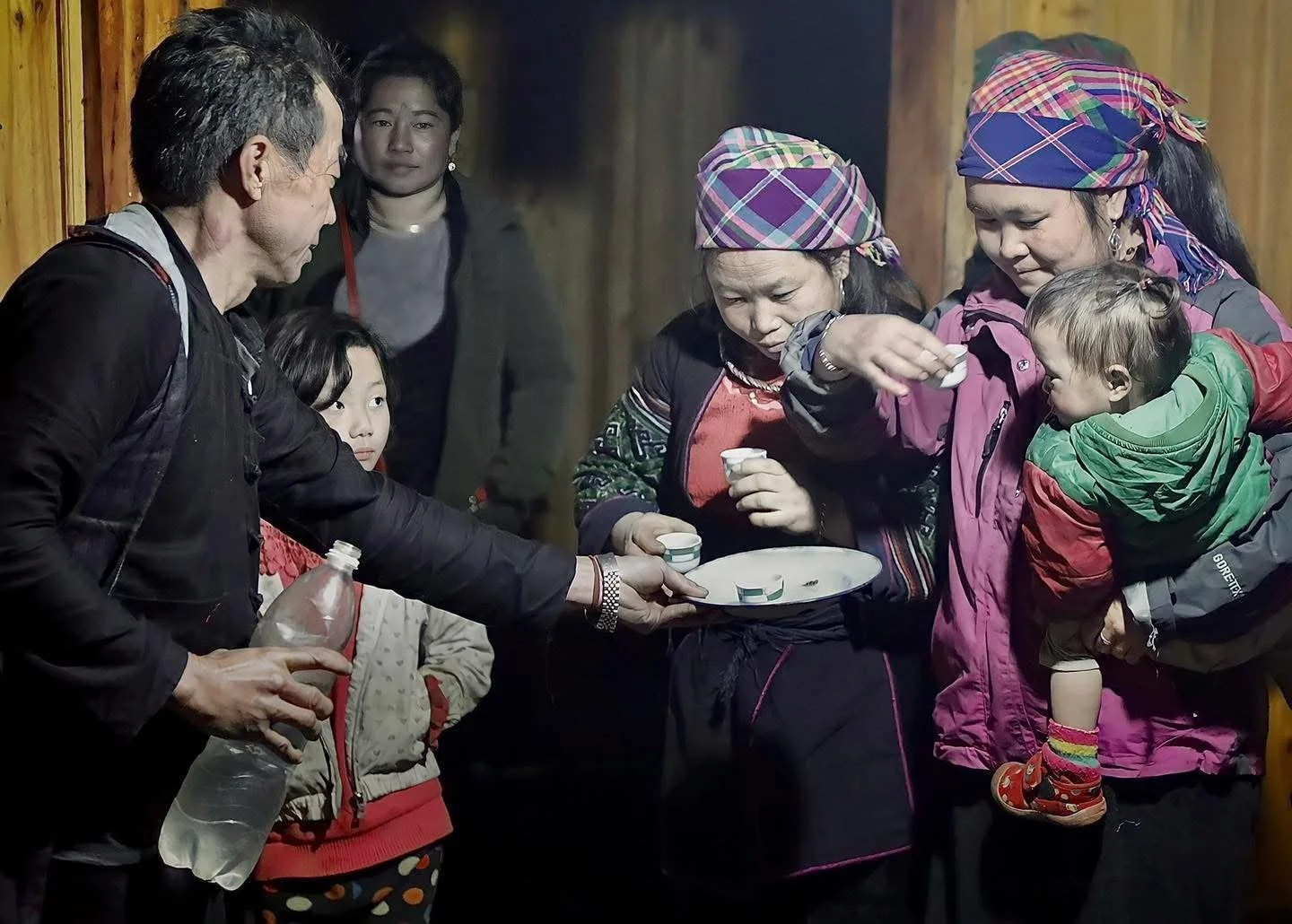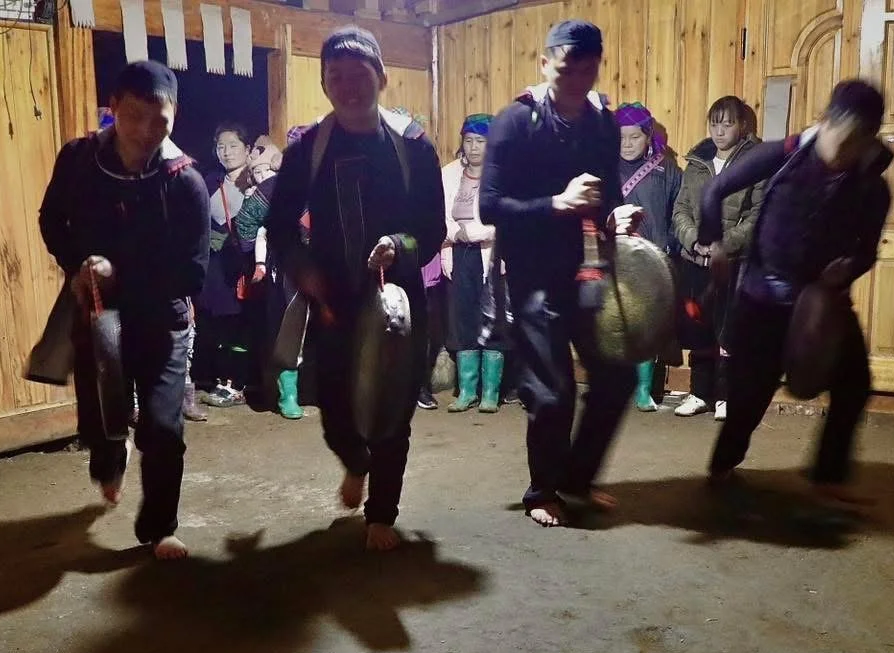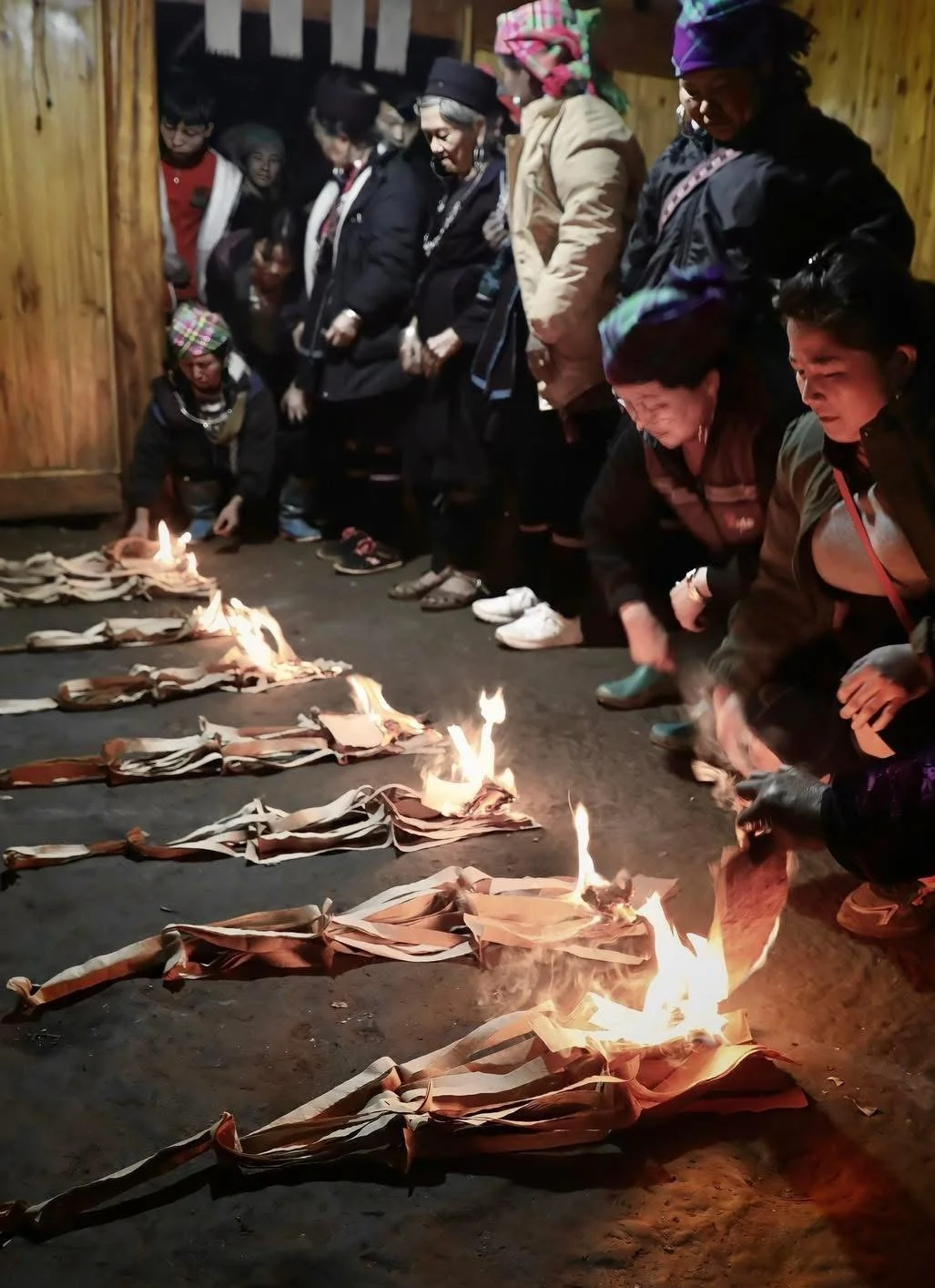Insights and Stories from Sapa and the Northern Borderbelt provinces of Vietnam.
Hmong Shamanic Rituals and Lunar New Year Traditions in Vietnam
A rare insight into Hmong shamanic beliefs and a powerful Lunar New Year ceremony that brings community, spirits and healing together in Vietnam.
Hmong Shamanic Rituals and Lunar New Year Traditions in Vietnam
Beliefs in Souls and Spirits
The Hmong are traditionally animist with most Hmong believing in the spirit world and in the interconnectedness of all living things. At the center of these beliefs lies the Txiv Neeb, the shaman (literally, “father/master of spirits”). According to Hmong cosmology, the human body is the host for a number of souls. The isolation and separation of one or more of these souls from the body can cause disease, depression and death. Curing rites are therefore referred to as “soul-calling rituals”. Whether the soul became separated from the body because it was frightened away or kidnapped by an evil force, it must return in order to restore the integrity of life.
Entering the Spirit World
A shaman is transported to another world via a “flying horse,” a wooden bench usually no wider than the human body. The bench acts as a form of transportation to the other world. The shaman wears a paper mask while he is reaching a trance state. The mask not only blocks out the real world, so the shaman can concentrate, but also acts as a disguise from evil spirits in the spirit world. During episodes when shamans leap onto the flying horse bench, assistants will often help them to balance. It is believed that if a shaman falls down before his soul returns to his body, he or she will die.
The shaman is considered a master of ecstasy. It is thought that his soul becomes detached from his or her body during a séance in order to leave for the spirit world. The shaman becomes a spirit and put him or herself on an equal standing with the other spirits. The shaman can see them, talk to them, touch them, and if necessary catch them and liberate them so they can return home.
Sacrifice and Healing
In Hmong culture, the souls of sacrificial animals are connected to human souls. Therefore a shaman uses an animal’s soul to support or protect a human soul. Often healing rituals are capped by a communion meal, where everyone attending the ritual partakes of the sacrificed animal who has been prepared into a meal. The event is then ended with the communal sharing of a life that has been sacrificed to mend a lost soul.
A Lunar New Year Shamanic Ceremony
Beginning the Ceremony
Participants at this lunar new year event begin arriving from early morning, each bringing gifts of incense, shamanic paper and an offering of meat in the form of pork or chickens. The shaman in charge of this ritual, Lý A Cha, begins the ceremony with a chant, using a mixture of Hmong and an ancient dialect called Mon Draa. Even to an outsider’s ear, his words sound different from everyday Hmong speech. The literal meaning of each word has become obscure to many present-day Hmong, even sometimes to those who chant it, yet the purpose of the ritual is to invite the too Xeeb spirit to manifest itself during the ceremony, to accept the offerings of those present, and to agree to provide them with blessings.
Divination with Kuaj Neeb
As he chants Lý A Cha throws the Kuaj Neeb on the ground repeatedly. The Kuaj Neeb is a tool for divination made from two halves of a buffalo horn. They are used to determine which way the soul has gone. The two pieces comprise a couple, and are separately referred to as male or female. When both pieces of the Kuaj Neeb land fat side down pointing in opposite directions, it is believed that the spirits have accepted the offerings and are willing to come to the ceremony to fulfil all wishes made by the participants.
Gong, Sacrifice and Protection
Next, the shaman beats the Nruag Neeb (a small black metal gong) three times while a sacrificial pig is placed on a wooden table next to the altar. The gong amplifies the shaman’s power. It represents spiritual strength through its penetrating, reverberating sound. It also serves to protect the shaman from evil spirits, like a shield.
The villagers have pooled their money to buy the large sacrificial pig, an offering to ask for a New Year blessing for the entire community. Its jugular vein is expertly slit, and there is much jubilation as the first drops of blood are caught in ritual bowls. The animal’s death throes are brief with laughter and happiness deriving from anticipation of the food which the pig will provide, and the prospect of future blessings gained from the animal’s sacrifice.
Calling Spirits and Reading Fate
The shaman follows this by throwing the Kuaj Neeb down on the ground several times, while he chants in Mon Draa. He holds the Nruag Neeb in his left hand. With his right, he alternately strikes the gong several times with the beater. He continues this alternation three times, while he chants in Mon Draa, in order to summon and communicate with the spirits to ask for their blessing (pauj thwv rig).
While the shaman conducts various parts of the ceremony, young men prepare and cook the meat while the women supervise and cook rice. Rhythmic dancing takes place through the day, always in same sex quartets dressed fully in Hmong clothing, yet with bare feet. Each dancer has their own gong and moves together in diagonal lines throughout the space in front of the altar.
Fire, Smoke and Spiritual Energy
As the ceremony enters the afternoon, a second shaman arrives. Giàng A Pho has been studying as an apprentice for many years and is well respected and highly regarded in his own right. Decoratively cut bamboo paper is placed in a line across the floor, one in front of each participant. Bamboo paper is used during shamanic rituals, in divination ceremonies and on other occasions. Today, the shaman chants in front of each participant for several minutes, repeatedly using the split buffalo horns before moving on to the next person. Once completed, the line of papers are ignited and left to burn out. The ashes are then read, allowing the shaman to make statements about peoples spiritual health as well as predictions about when each participant should have their own individual séances.
Next, a pyre is constructed made from the shamanic papers collected during ceremonies through the previous years. These are ignited by Giàng A Pho and manipulated using bamboo poles into a smouldering pile of embers. While Lý A Cha chants in Mon Draa, four other men begin beating their individual gongs with increasing ferocity, reaching a deafening crescendo before Lý A Cha rolls through the embers causing a burst of flames to leap into the air. The other men soon follow, before jumping up and beginning a loud and rhythmical dance through the room now drenched in thick smoke. Their bare feet send sparks flying as they pound the ground.
Offering Food to Spirits and Community
As the smoke clears, two bowls of meat and rice are placed on the altar, along with small cups of homemade rice wine. After toasting the spirits and drinking the rice wine, the shaman cuts some small pieces of pork and puts them on top of some rice, which is laid on a banana leaf, to serve to the spirits. He also pours rice wine on top of the spirits’ food and chants an invitation in Mon Draa to the spirits.
The ceremony concludes with a communal feast. The pig has been prepared as a variety of different dishes and placed upon tables in the altar room. Everyone who attended the ceremony is invited to partake and the room becomes a place of laughter and story telling which goes on long into the night.
Watch the Full Video
Full video to go with this photo story can be found here:

